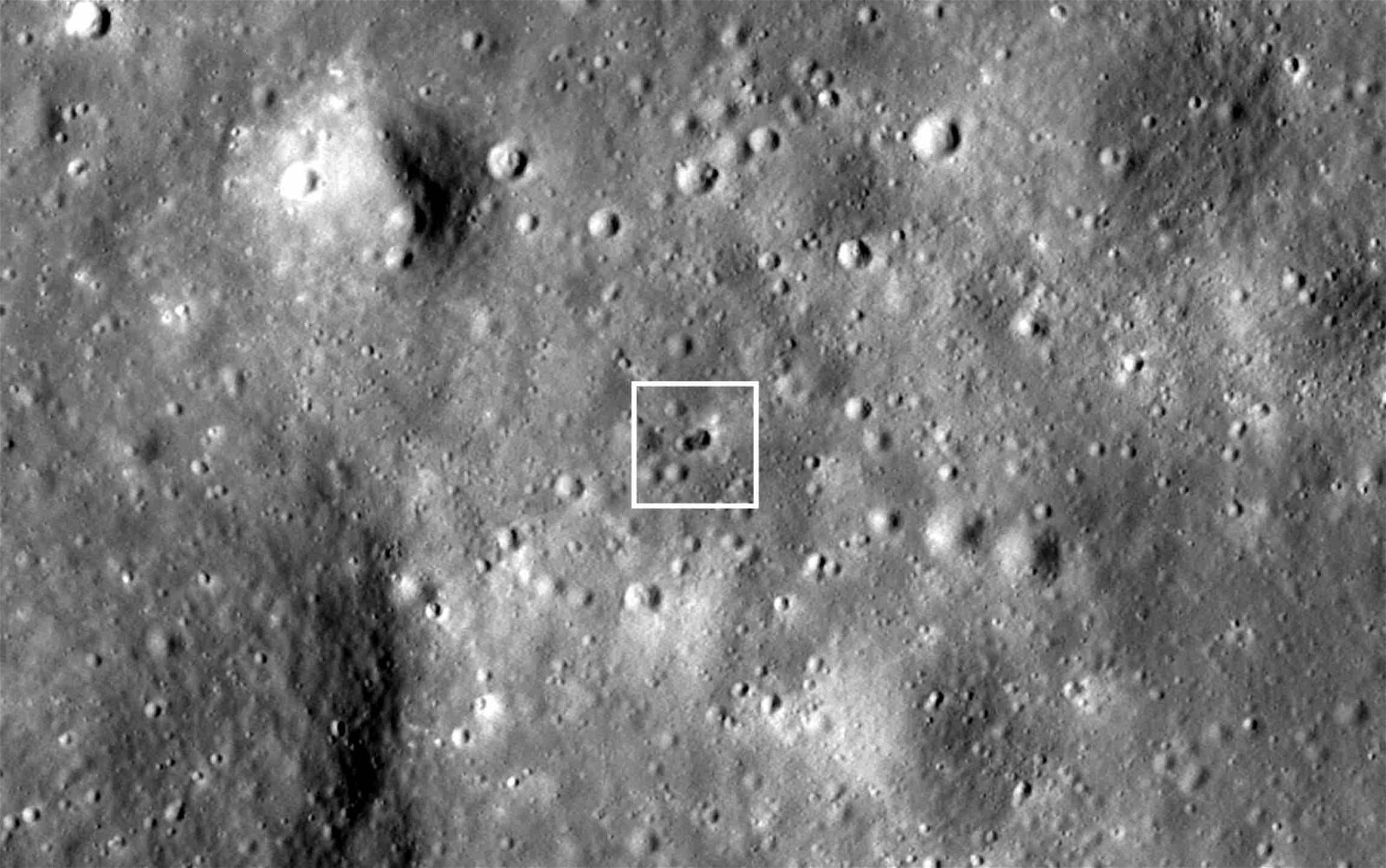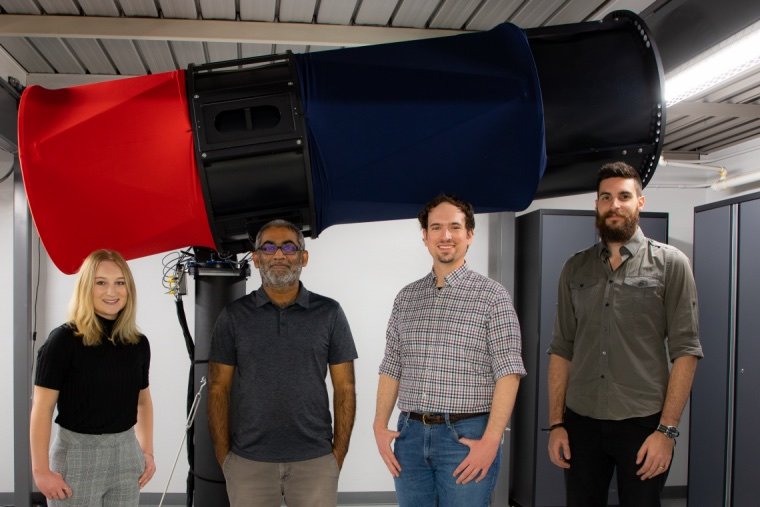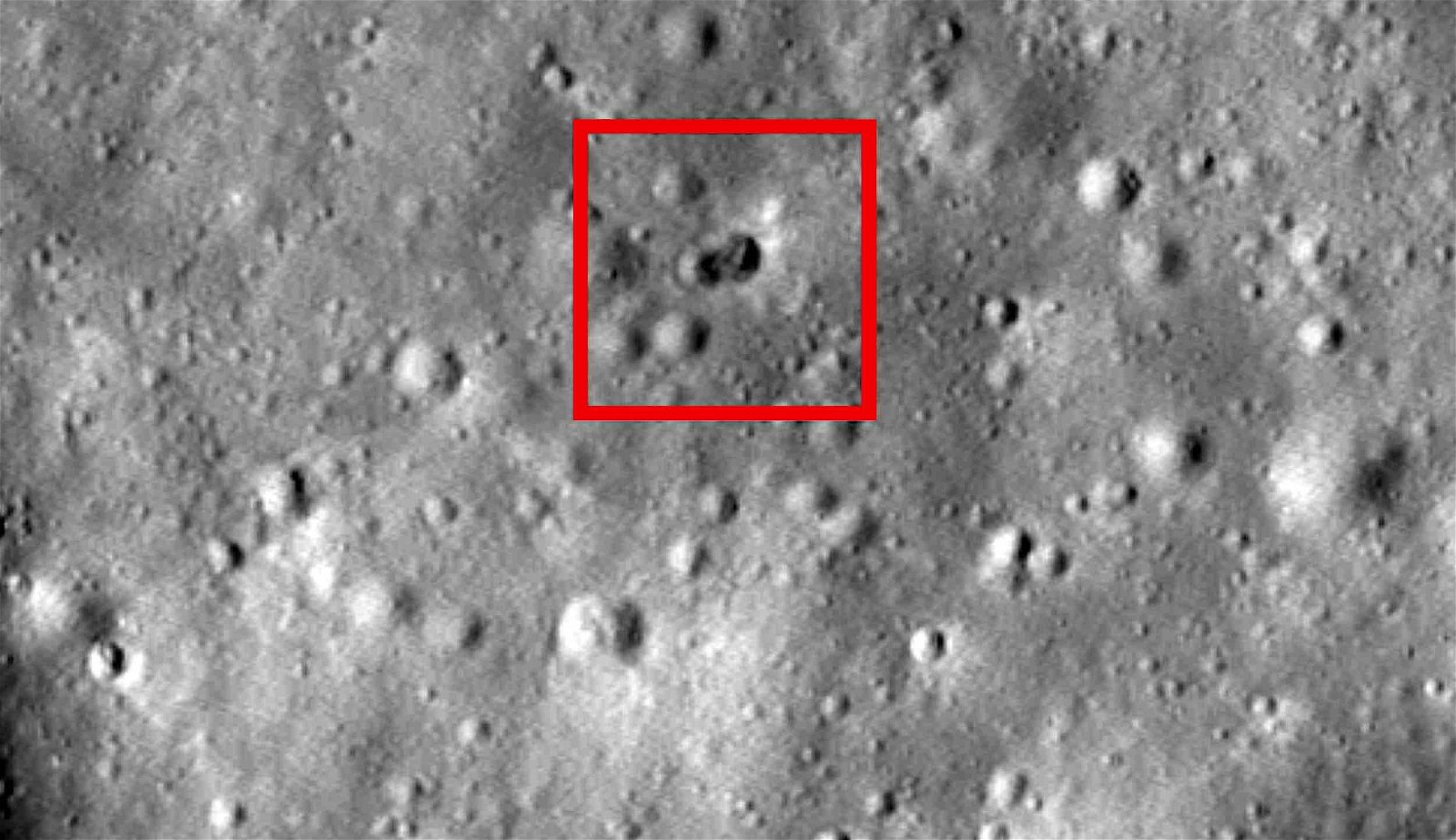Last March, a mystery object was tracked by astronomers as it hurtled toward the lunar surface, which eventually crashed into the far side of the Moon along the northwestern fringe of the Mare Orientale impact basin near the massive Hertzsprung Crater.
Although the object was believed to have been identified as a defunct portion of a Chinese rocket, something about the errant spacecraft’s impact with the Moon had puzzled scientists. Unlike the normal impact features that are formed when objects collide with the lunar regolith, this one had left a curious, double crater, which was later spotted by the cameras on NASA’s Lunar Reconnaissance Orbiter (LRO) as it passed over the impact site.


Speculation ensued about what the object might have been that could have caused such an unusual impact feature. Now, a team of researchers at the University of Arizona says they have uncovered evidence that can definitively prove the Chinese rocket’s identity.
However, the findings, recently published in The Planetary Science Journal, also reveal an additional twist: that the Chinese craft had likely carried a mysterious payload with it, the identity of which remains unknown.
A Mystery Object is Detected in Space
The mysterious object, designated WE0913A, was first spotted several years ago by researchers at the University of Arizona’s Catalina Sky Survey, who noticed it moving at a surprising pace as it passed between Earth and the Moon.
Although initially thought to have been a SpaceX Falcon 9 rocket booster launched in 2015, spectral analysis of light reflected off the object by the team’s Raptor Telescope helped determine that the object’s movement and appearance made a booster from China’s Chang’e 5-T1 rocket a more likely solution.
China initially disputed this, claiming that the rocket, a part of the Chinese National Space Administration’s lunar exploration program, was believed to have burned up in the Earth’s atmosphere during re-entry. However, U.S. Space Command officials confirmed that the Chinese rocket’s third stage was never detected impacting Earth’s atmosphere.
The rogue booster, which had been the rocket’s third and uppermost stage that provided thrust to carry the experimental Chang’e 5-T1 to its eventual orbit around the Moon, was left behind after it jettisoned the mission’s orbiting module and sample return capsule.
That is until light reflecting off the rotating rocket booster was eventually spotted by astronomers at the University of Arizona.
Shedding Light on the Mystery
Vishnu Reddy, a professor of planetary science at the University of Arizona’s Lunar and Planetary Laboratory, said that the team was able to observe variations in the light being reflected off the rocket that helped them narrow down the object’s likely identity.
“When the broad side of the rocket is pointed at you, you get more light, and as it turns, you get less light from that side,” Reddy, one of the co-authors of the new paper, said in a statement.
Tanner Campbell, a doctoral student under Reddy at the University of Arizona’s Department of Aerospace and Mechanical Engineering and the first author of the new study, said the team was able to make comparisons between light curve data made during observations of WE0913A and computer simulations that accounted for thousands of hypothetical space objects, which allowed them to identify key features of the object that were able to help reveal its identity.


“Something that’s been in space as long as this is subjected to forces from the Earth’s and the moon’s gravity and the light from the sun,” Campbell said. However, unlike a typical empty rocket booster fitted with an engine on one side, the Arizona team noticed WE0913A had been moving very strangely.
“You would expect it to wobble a little bit,” Campbell said. “But this was just tumbling end-over-end, in a very stable way.” The only solution would seemingly have been another object aboard the rocket booster, which would provide a counterweight to the pair of 1,200-pound engines it carried.
“We performed a torque balance analysis, which showed that this amount of weight would have moved the rocket’s center of gravity by a few inches,” Campbell said, adding that the observed movement could not be explained in the absence of an additional source of weight on board the craft.
“That’s what leads us to think that there must have been something more mounted to the front,” Campbell said.
A Tale of Two Craters
Along with their observations of the tumbling craft, the team says that additional revealing data came from the strange, double crater the craft produced as it collided with the lunar surface.
The pair of impressions, separated approximately 100 feet from one another, are unique among craters caused by collisions between manmade spacecraft and the Moon.
“This is the first time we [have seen] a double crater,” Campbell said. Past observations of craters produced by Apollo-era rockets are generally round or oval-shaped, depending on whether the impacting object had been traveling straight downward or if it approached at an angle. When Chang’e 5 T1 made impact, it came almost straight down, and although the shape of the craters it produced is consistent with this trajectory, Campbell says that something else must have been present in order to account for there being two of them.
“To get those two craters of about the same size, you need two roughly equal masses that are apart from each other,” Campbell said.
Tracking Defunct Space Hardware
Roberto Furfaro, deputy director of the University of Arizona’s Space4 Center and also one of Campbell’s co-advisers, says the team’s research underscores the need for being able to track the growing number of objects that are populating space as more nations engage in their own off-planet explorations.
“[O]nce you’re putting more and more objects on the moon, it becomes extremely important that we not only track the object, but also understand what they are going to do once they get there,” Furfaro said.
Currently, the identity of the object presumed to have created the second crater remains undetermined, and according to Campbell, we may never know what it was unless China chooses to disclose it.
“Obviously, we have no idea what it might have been,” Campbell said. “Perhaps some extra support structure, or additional instrumentation, or something else.”
“We probably won’t ever know,” he guesses.
Campbell and the team’s paper, “Physical Characterization of Moon Impactor WE0913A,” was published in The Planetary Science Journal on November 16, 2023.
Micah Hanks is the Editor-in-Chief and Co-Founder of The Debrief. He can be reached by email at micah@thedebrief.org. Follow his work at micahhanks.com and on Twitter: @MicahHanks.

